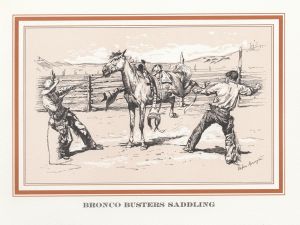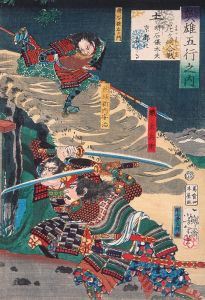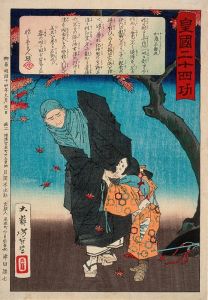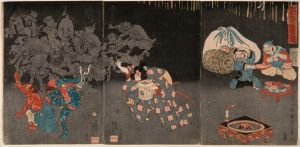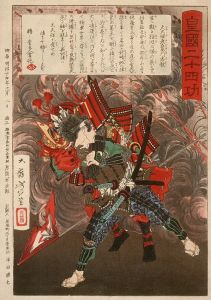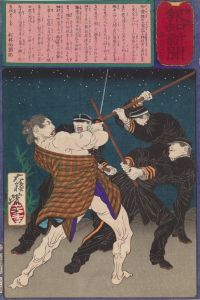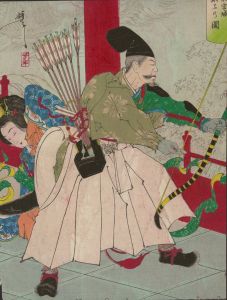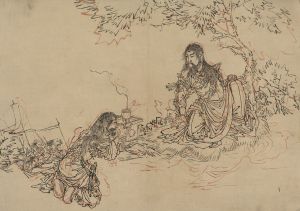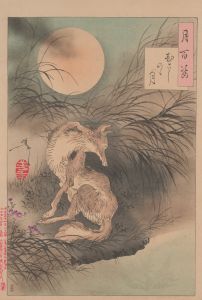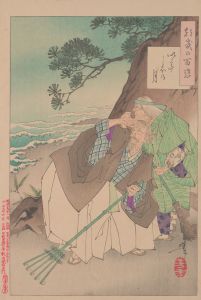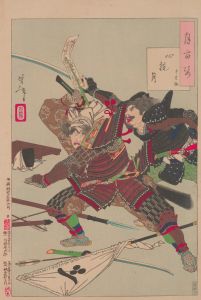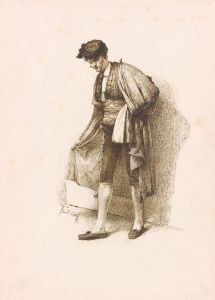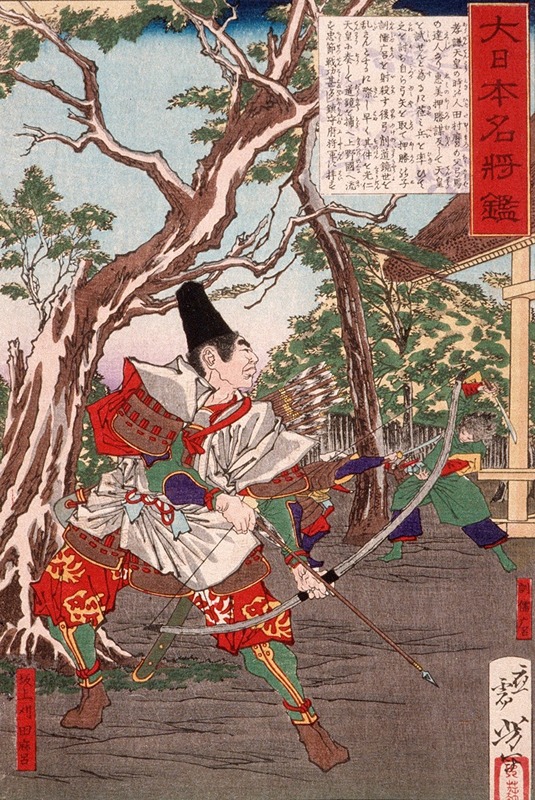
Sakanoue no Karitamaro Drawing His Bow
A hand-painted replica of Tsukioka Yoshitoshi’s masterpiece Sakanoue no Karitamaro Drawing His Bow, meticulously crafted by professional artists to capture the true essence of the original. Each piece is created with museum-quality canvas and rare mineral pigments, carefully painted by experienced artists with delicate brushstrokes and rich, layered colors to perfectly recreate the texture of the original artwork. Unlike machine-printed reproductions, this hand-painted version brings the painting to life, infused with the artist’s emotions and skill in every stroke. Whether for personal collection or home decoration, it instantly elevates the artistic atmosphere of any space.
Tsukioka Yoshitoshi, a renowned Japanese artist of the late Edo and early Meiji periods, is celebrated for his innovative and dramatic woodblock prints. Among his notable works is the print titled "Sakanoue no Karitamaro Drawing His Bow." This artwork is part of Yoshitoshi's series "Tsuki hyakushi" (One Hundred Aspects of the Moon), which was published between 1885 and 1892. The series is widely regarded as one of Yoshitoshi's masterpieces, showcasing his mature style and deep interest in historical and legendary figures, often depicted under the mystical influence of the moon.
"Sakanoue no Karitamaro Drawing His Bow" features the historical figure Sakanoue no Tamuramaro, a prominent military leader of the early Heian period in Japan. He served as a general under Emperor Kanmu and is best known for his campaigns against the Emishi people in the northeastern regions of Honshu. Tamuramaro's successful military expeditions contributed significantly to the expansion and consolidation of imperial control over these areas. He was later appointed as the first shogun, a title that would become significant in Japanese history.
In Yoshitoshi's depiction, Sakanoue no Tamuramaro is shown in a dynamic pose, drawing his bow with a sense of focus and determination. The composition captures the tension and energy of the moment, highlighting Yoshitoshi's skill in conveying movement and emotion through the medium of woodblock printing. The moon, a recurring motif in the series, is subtly integrated into the background, adding an ethereal quality to the scene and emphasizing the connection between the historical narrative and the natural world.
Yoshitoshi's work is characterized by its vivid use of color, intricate detailing, and a blend of traditional and modern artistic techniques. His prints often explore themes of heroism, beauty, and the supernatural, reflecting the cultural and social changes occurring in Japan during his lifetime. The "One Hundred Aspects of the Moon" series, in particular, demonstrates Yoshitoshi's ability to merge historical storytelling with artistic innovation, creating images that resonate with both historical significance and aesthetic appeal.
"Sakanoue no Karitamaro Drawing His Bow" exemplifies Yoshitoshi's mastery of the woodblock print medium and his dedication to portraying historical figures with both accuracy and artistic flair. The print not only serves as a visual representation of a key moment in Japanese history but also as a testament to Yoshitoshi's enduring legacy as one of Japan's last great ukiyo-e artists. His work continues to be celebrated for its contribution to the preservation and evolution of Japanese art, bridging the gap between traditional and modern artistic expressions.






